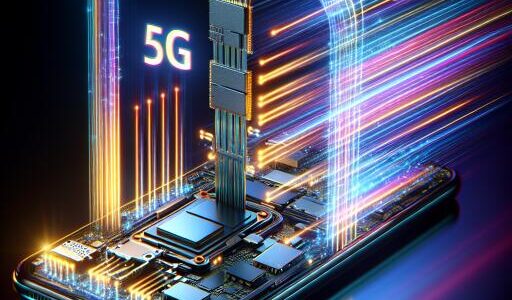AMD’s Breakthrough with AI-Powered Game Download Acceleration Technology
In an exciting development for gamers and developers alike, Advanced Micro Devices, Inc. (AMD) is poised to introduce a pioneering approach aimed at revolutionizing the way we download and experience video games. The latest innovation at the heart of this advancement is the Neural Texture Block Compression system, a technology innovated through the adept application of artificial intelligence. This groundbreaking technique is set to be unveiled at the notable Eurographics Symposium on Rendering taking place in London this coming July.
Reflecting a strategic pivot towards integrating AI into its products, similar to its industry rival Nvidia, AMD is rapidly advancing its efforts in the AI domain. Interestingly, the company is now categorizing its gaming CPUs for laptops under the AMD AI brand name. Despite recognizing the ground it needs to cover to parallel Nvidia’s achievements in AI, AMD is confident in the exceptional gaming performance of its latest graphics units, like the Radeon RX 7800 XT. However, AMD is determined to optimize the utilization of AI matrix cores within gaming contexts, which till now have seen limited application.
Central to AMD’s announcement is an insightful AI-centric method for texture compression. By tapping into neural networks, AMD’s invention promises to diminish the universally dreaded wait times associated with game downloads. Through a special mention on the AMD GPUOpen platform, the company expressed a shared frustration over bulky game files and highlighted its AI-driven solution aimed at dramatically minimizing data sizes without compromising game performance.
Furthermore, AMD reassures that its Neural Texture Block Compression system will smoothly integrate with existing game development processes, promising a revolution in how textures — a prevalent factor in the swelling sizes of game files due to the demand for higher resolutions and detail — are compressed. By potentially maintaining high-quality texture detail in a more compact format, AMD’s technology could significantly reduce the footprint of game installations.
This isn’t the first time the industry has seen AI-based advancements aimed at improving texture compressions. Nvidia, a key player in the realm, introduced a related innovation in August 2023. Their research discussed at Siggraph, titled “Random-Access Neural Compression of Material Textures,” showcased an AI technique that impressively condensed a gigantic uncompressed texture down to a fraction of its original size while preserving an astonishing level of detail.
For instance, a voluminous 256MB texture, originally spanning 4,096 x 4,096 pixels, was efficiently shrunk to just 5.3MB at a resolution of 1,024 x 1,024 pixels using Nvidia’s block compression algorithms. Yet, Nvidia went further by sustaining the original texture’s size with substantially more detail in just 3.8MB of data. The tech community is on the edge of its seats, waiting to see if AMD’s impending Neural Texture Block Compression system will follow in Nvidia’s footsteps or chart a new path in AI-powered texture compression.
The announcement of this new system comes amidst a flurry of activity from AMD, which also has its sights set on the release of the first Zen 5 CPUs in July 2024. As the company prepares to showcase its latest AI-driven technology, the gaming and development world watches with bated breath, eager to embrace solutions that promise not just heightened realism and detail in gaming textures but also a swifter, smoother gateway into the virtual worlds they love.








